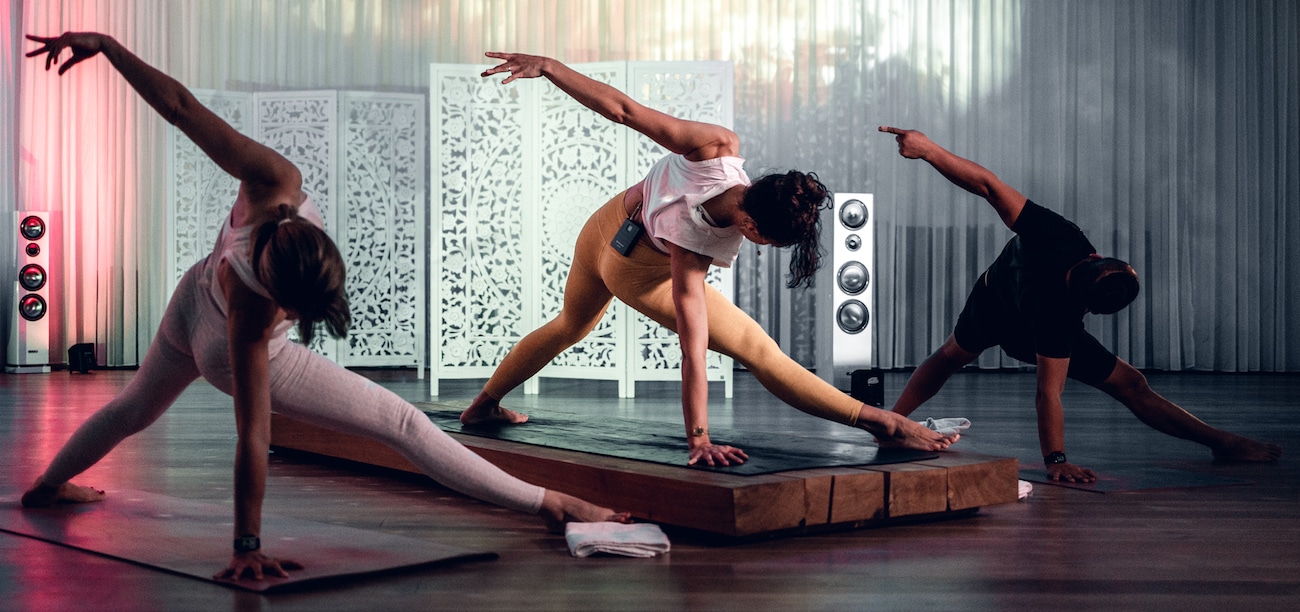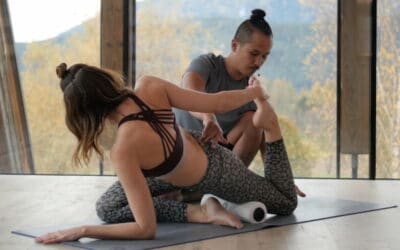Music can make you happy, music can make you sad. Listening to the right playlist can change your mood, your day, your whole being for a moment in time. Yoga, on the other hand, helps you relieve stress and can ground you after a difficult day. A number of yoga styles, like Inside Flow, also rely on music. Let’s explore why music is important for your yoga class. What happens when you combine these two elements that rely on movements and rhythm? Can music change your yoga practice?
“Yoga is like music. The rhythm of the body, the melody of the mind, and the harmony of the soul creates the symphony of life.”
In this article, we will find out why music is important during yoga. We will talk a little about the effects music has on the brain, current scientific research on the topic of using music during yoga class and how implementing music into your yoga class can possibly change your life. We will also talk about the usage of yoga chants, mantras and instruments during yoga.
A few of our TINT Instructors, namely Alexey Gaevskij, Ami Norton and Cristi Christensen, will then take you on a journey through their usage of music during yoga – and tell you why music is important to them.
Table of Contents
1. Why Is Music Important for Yoga?
In this part of the article, learn everything about current scientific research on music (hint: it’s complicated) and about our team at TINT’s opinions on the usage of music during yoga.
1.1. Scientific Research on Music and Yoga
Listening to music feels good to most people – it also improves your health, even though we don’t exactly know why. After a long and stressful day, the right beat can help you relax. If you’re feeling sad, music picks you right back up again.
With the right music, almost every situation feels manageable. Music is also an integral part of other art forms, such as film – the right soundtrack really makes all the difference in the world and can change a scene in many ways.
1.1.1. Why is music important to us humans?
Have you ever wondered why we love listening to music? Why is music important to us as a species?
One of the reasons why music is important to us is that, with music, people enter a so-called “flow state” (a term created by Mihaly Csikszentmihalyi, a psychologist, professor and author). In this “optimal” state, “we feel our best and perform our best”. This term is usually connected to talented artists, such as musicians and painters, or elite-level athletes – with music, however, everyone can improve their potential.
If the term “flow” sounds familiar to you, this may be why: Vinyasa teachers often use the cue “flow” when instructing a vinyasa class, which is why Vinyasa classes are also often called “flow” classes. Vinyasa yoga focuses on the breath, your breath often having a rhythm of its own, and helps relax your body. That’s why music is important for many things – relaxation can improve your mental health by finding your inner center and letting go of everyday worries.
Ready to focus on your breath? We offer you a number of Vinyasa classes on TINT, like Embrace Softness by Alexandra Harfield, the Strength & Grace Yoga workshop by Barbra Noh or Mathieu Boldron’s Wild Flow. Flow with us today – only on TINT.
1.1.2. What’s the Science Behind Yoga and Music?
What do we actually know about the science behind music and yoga?
According to Inside Flow founder Young Ho Kim, the basis for the combination of yoga and music is the science of music.
While music is emotional, it’s based on a logical, scientific structure. For instance, modern pop songs are segmented into groups of 8 beats, which are divided into 2 parts of 4 counts. Every 8 counts, the music changes. While the song’s energy increases during the first 4 counts, it decreases during the second 4 counts.
Another important concept of music is resonance, which is “the sound or vibration produced in an object by sound or vibrations of a similar frequency from another object”.
Young Ho Kim advises to “play slower music with a lower bpm (beats per minute) rate” when creating a “soothing and relaxing” yoga class. In contrast, when creating an “exciting energy” in your class, playing a “faster song with a higher bpm rate” is advisable.
But music does more than influence the heart rate of yoga students and teachers. It can change your life. How so? Read on to learn how some of TINT’s Teachers, such as Alexey Gaevskij, Ami Norton and Cristi Christensen feel about using music during their yoga practice.
1.2. What Do Yoga Teachers Say About Music and Yoga?
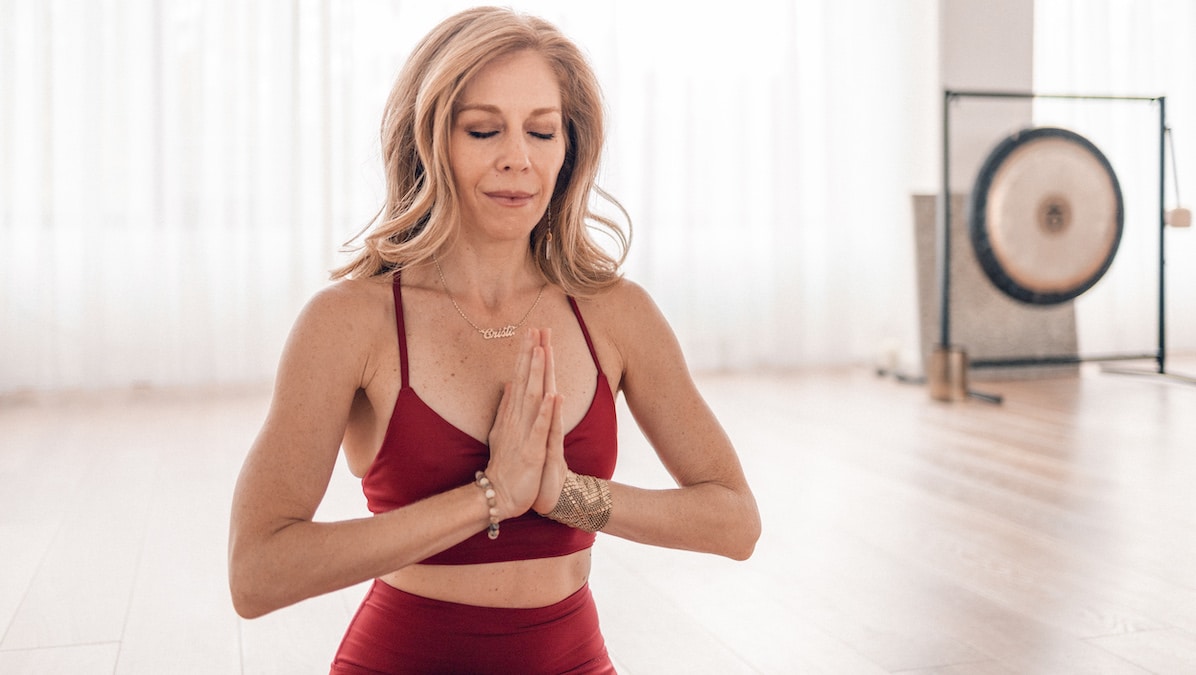
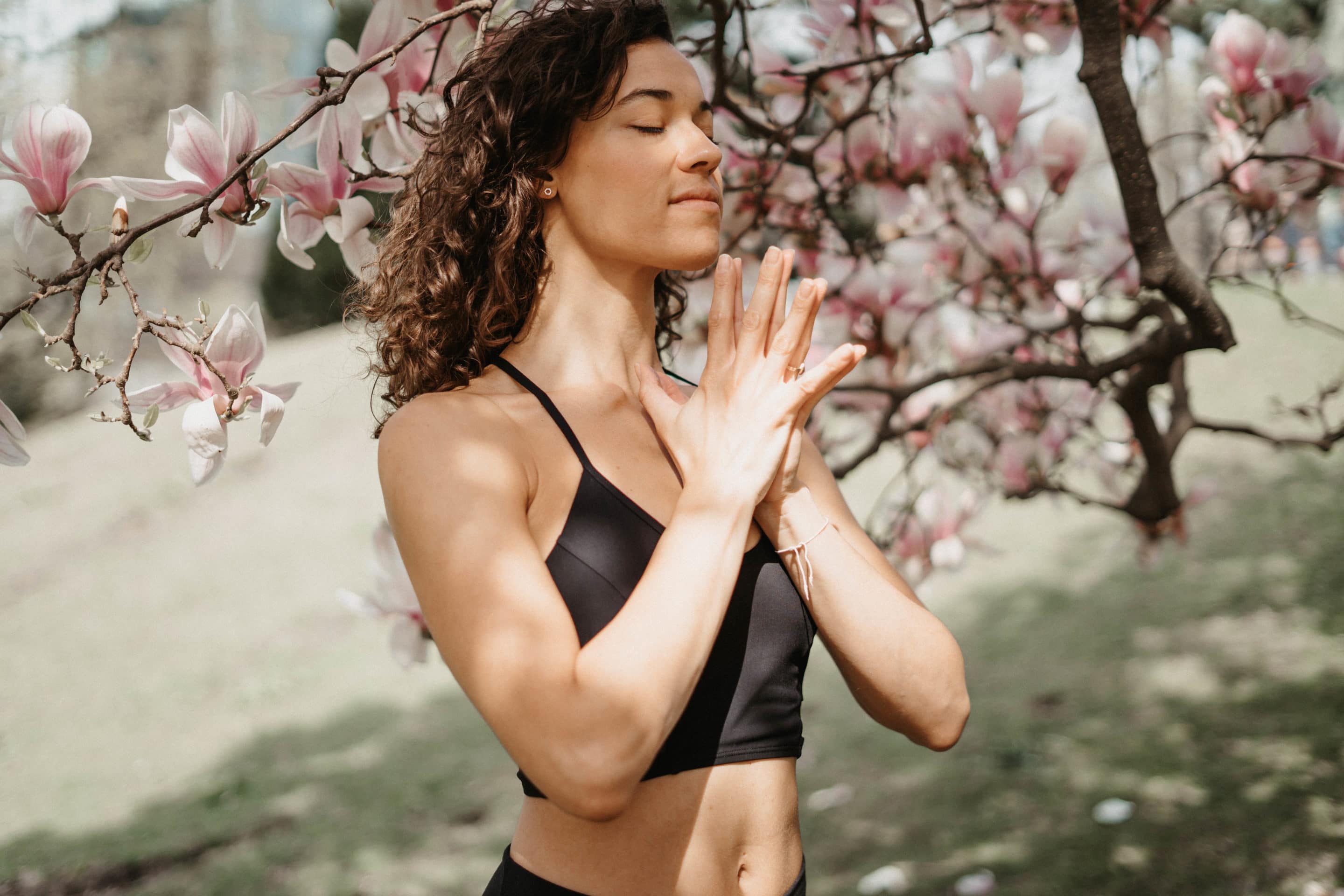
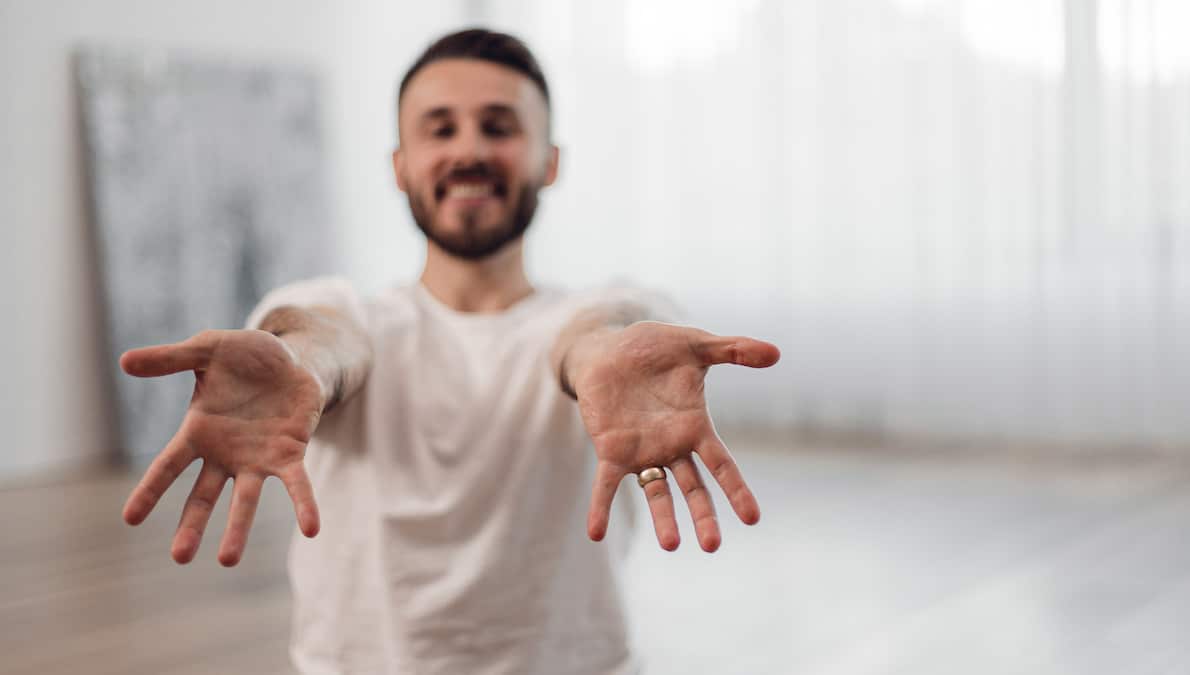
Find out what music means to some of our yoga teachers at TINT. Pictured: Cristi Christensen., Ami Norton, Alexey Gaevskij.
Now that you’ve learned more about the science behind yoga and music, we want to give the mic to some of the yoga teachers in the TINT community and tell you why music is important to them for yoga.
1.2.1. Using music during yoga class isn’t for everyone
TINT team member and yoga teacher Doreen, for example, never uses music during yoga classes. Why? For her, music is something she enjoys, and so is yoga, but she feels that the combination doesn’t add anything to her teaching. “For me, listening to music is a separate activity. And just like I can’t clean the dishes and mob the floor at the same time, I can’t do yoga and listen to music at the same time.”
1.2.2. Music Can Be a Powerful Tool for Yoga
“Music is a surfboard for the waves of challenge.”
For yoga teacher and MYMOVES founder Alexey Gaevskij, the situation is a bit different. When asked about using music for his yoga teaching, Alexey said: “Music is a powerful tool. Choosing the right music for a yoga class is a science of its own. As a yoga teacher, you have to have some DJ skills, too!”
Why is that? According to Alexey, “you need to know what your students need that day.” Are they stressed? Put on some upbeat music. Are they feeling self-conscious? Give them some powerful music that picks them up again.
Alexey is sure that, once you’ve been teaching for a while, you will find poetry through pragmatism. “It’s a bit like cooking. Do you need energy? What serves you better – an espresso, or a cappuccino? It’s the same with music. Choosing the right music at the right time truly enriches your life.”
In his personal life, Alexey feels that music can become a way to communicate your feelings when you have no one to talk to. You can always use music as a surfboard for the waves of challenge in life.
1.2.3. Music Can Influence the Energy of a Yoga Class
“Music has been my companion my whole life.”
Ami Norton, a Senior Inside Flow Teacher who did her yoga teacher training with Young Ho Kim, agrees that using music for your yoga practice can change things up. “Music can awaken emotions and memories inside you – not always by choice. It can enhance your joy when you’re happy, give you room when you’re feeling melancholic.”
How does Ami use music for her yoga classes? She feels that it helps her be creative when creating a new Inside Flow, such as Hold You on TINT, and can help her students’ motivation during a challenging part of the class. When she feels that her students are stressed, she will use calming music to ground them in the moment. That is also part of a yoga teacher’s job, Ami says. “As a yoga teacher, you influence the energy in the room. Choosing the right playlist helps you with that.”
Using a playlist that means something to you helps you make your yoga class your own – your music becomes your signature as a yoga teacher. Ami’s tip for your own playlist for yoga class? “Stay authentic.”
1.2.4. Music Touches Your Soul
“We are energetic, vibrational beings. The power of music impacts our hearts, bodies, spirits and souls.”
Cristi Christensen, a former elite-level gymnast who found her passion for yoga “before it was cool”, never teaches without music. For her, music is more than a tool – music penetrates the layers of the soul. This is a concept known as Kosha, relating to yoga in that it describes the five layers of our soul.
Music, according to Cristi, reaches these layers and helps us find ourselves in the process. For Cristi, music shifts your energy, it alters your mood and elevates your consciousness. In short: “music is medicine.”
When she feels that the energy in her class is a little stuck and her students need to let loose, music helps “get in touch with how you truly feel”. It can be “liberating and wild” by helping you “uncover your feelings”.
Depending on the theme of the class, Cristi will use yoga chants for restorative or relaxing classes and spacious music when she wants her students to let go and be embraced by the rhythm and the melodies of the music. She wants her students to let the music wash over them to have their own, unique experience in her class. For Cristi, music is the soundtrack to the experience that is yoga.
Subscribe to TINT on YouTube to learn more about Cristi Christensen’s passion for music and yoga.
What is your personal experience with using music for your yoga class? Why is music important to you? Whether you are a yoga teacher or a yoga student, head on over to instagram and let us know how you use music during yoga. We’d love to share your stories on our TINT Instagram page!
2. Yoga Music: Nada Yoga, Mantras, Chants and Co.
In this part of the article, let’s talk about some options of how to use music during yoga, namely nada yoga, mantras, chants and the use of instruments for yoga.
Read on to learn more about nada yoga, mantras, chants and more and their relevance for yoga.
2.1. Nada Yoga
A highly relevant term for the science behind yoga and music that you may not know is nada yoga. The sanskrit word nada means “sound”, making the term nada yoga “the yoga of sound”. While there are no official categories of nada yoga yet, the concept can be separated, for instance, into mantras, i.e. spiritual words that are repeated during practice, yoga chants, i.e.devotional music and songs, and sounds without mantras or chants.
While modern music may not yet be accepted by all yogis, music has always been an integral part of yoga. Yoga chants and yoga mantras have been used to quiet down the thoughts with meditation for centuries, meaning that your breath is not the only rhythm that you can focus on in this practice.
2.2. Mantra Music
A mantra is “a sacred utterance that is considered to possess mystical or spiritual efficacy.” Mantras can be spoken aloud or only in your mind, repeated continuously or spoken only once. The most well-known mantra is om.
To get a better understanding of mantra music, to use in your personal yoga practice or just to relax after a long day, why not try these free spotify mantra music playlists for yoga?
Stay tuned and connect with TINT on Spotify for more yoga playlists.
2.3. Yoga Instruments
A number of musical instruments have had their place in yoga practice for a long while, as well. Of course, your mind can be used as an instrument for meditation. Other instruments in yoga are usually acoustic instruments, such as a gong, singing bowls, flutes, drums and string instruments. TINT Instructor and international yoga teacher Mathieu Boldron enjoys using musical instruments for his classes, for example the harmony handpan, which he uses for his Energy of Breath class.
Mathieu Boldron’s Energy of Breath class on TINT uses yoga instruments, such as a harmony handpan. Photograph by TINT.
But really, music can be used for meditation in a number of ways. It can help you achieve inner peace more easily, if just staying quiet and focusing on your thoughts is too difficult at first (which is completely normal!), and over time, can help you reach a calm state more quickly.
Ready to meditate? Try our 30-day Yoga & Meditation Challenge with Matt Giordano, Faith Hunter’s Quiet Spaces – 7th Chakra Practice, or Cristi Christensen’s Space Meditation, which is part of her Soul Fire Elemental Activation Workshop. Breathe deeply and let go of your everyday worries with us at TINT.
And if you just want to listen to some good music and get inspiration from TINT founder Young Ho Kim which music to use during yoga, check out his weekly livestream Jukebox on YouTube.
Subscribe to TINT on YouTube for interesting content, such as Young Ho Kim’s Jukebox.
Header Picture by TINT.

